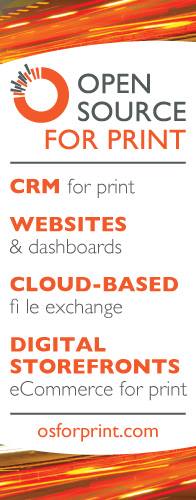What to do when market pressure tries to lower your bottom line
By Charles Groce, CEO of Pearl Street Consulting
Republished from Graphic News magazine, January 2017
It doesn’t matter what industry you’re in, making money is first and foremost about doing more with less. This applies not only to the efficient physical operation of machinery and the creation of tangible products, but also to the maintenance of customer relationships.
Printers don’t make their money inventing some new kind of social media app that goes viral with the under 18 crowd and makes a gazillion dollars on iTunes. Printers make money by putting ink on paper and by winning the opportunity to do that from paying customers.
Most of these paying customers are not new to print, and so there is a kind of market saturation in print that has existed in the industry for a long time, but has picked up steam since the onset of the financial crisis of 2008. New customers therefore come at the expense of other organizations who through either high pricing have pushed their customers out the door in search of new vendor or who somehow botched the customer relationship, making the customer ripe for the picking by the competition.
Nevertheless, there are times when printing companies have to effectively lower prices when competition demands it (or effectively raise prices when production costs go up…last week’s announcement of a newly found cooperation among OPEC and non-OPEC countries means that fuel prices are set to rise significantly in my opinion…lock in those delivery contracts now).
The healthy way for a printing company to lower prices is to reduce the number of man hours required to put ink on paper. This should be done through the use of some kind technology that enhances productivity, which could come in the form of a new stitcher or from an information system which help identify process waste. It’s vitally important for companies to maintain quality across the board while reducing those man hours. This is why obtaining a higher level of efficiency is the answer to the need to lower prices.
The same is true for other industries. Take a cut throat industry like the restaurant business. Something like 90% of new restaurants fail within the first year. Most owner-operated restaurants don’t “make it” in the long run and eventually become a money pit. Customers are completely unforgiving when they have a bad experience. Enter this business at your own peril.
During my college years I worked as head waiter at a fine dining restaurant (I did an excellent table side flambé, complete with exaggerated gestures, all the while maintaining a look of hardened concentration). Things were going great until new competition moved into the area, offering much cheaper food of comparable quality. The owner’s answer? Cut prices and quality and finance it by replacing a skilled kitchen staff with untrained, cheaper staff. The restaurant went out of business within two years as existing customers were conscious of the drop in quality, ruining the restaurant’s reputation. I quit within 3 months and went back to school, as tips fell off and our best customers left. Most of them went to the competition, although some just stayed home, after all, no other place in town offered table side flambé…
This story offers important lessons for print. First, never cut quality. Your customer’s will notice and will not forgive you when they do. Second, always strive to find a better way, even when the competition isn’t breathing down your neck. This keeps your organization light on its feet. And third, always strive to stand out and be unique. This keeps customers loyal even when they’re not paying the lowest price (and after all the easiest customer to win is the repeat customer).
The key to all of this in a complex manufacturing industry like print is the qualified and effective usage of information technology. How do you use technology to maintain quality in print? Reduce process management time through information automation and invest the balance in maintaining product quality. How do you always strive to find a better way? The answer is in continually taking a sober look at your data and applying analytics (you must therefore also be collecting data). How do you stand out and offer something unique? Throw in internet-based products and services where possible, build custom solutions specific to particular customers to encourage relationship lock in and add gray area to pricing, and make your customers feel like all you do is think about their projects.
There are intelligent ways to do all of this. What’s needed organizationally is expertise. However, as most readers of this magazine know, it’s difficult to find and keep tech talent, and even harder to find tech talent that understands the nature of the printing business. It may make the most sense therefore to establish a long term consultative relationship.
About the author: Charles Groce is the CEO of Pearl Street Consulting, a Michigan-based IT, web, and software consultancy.

